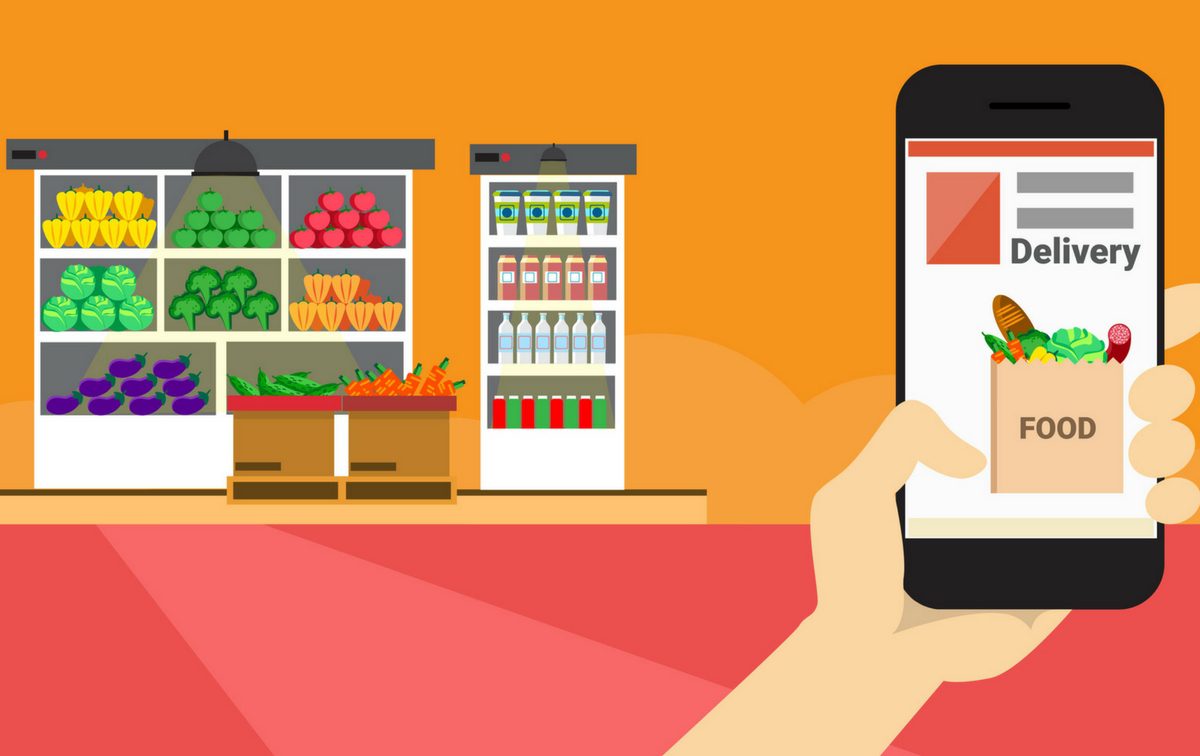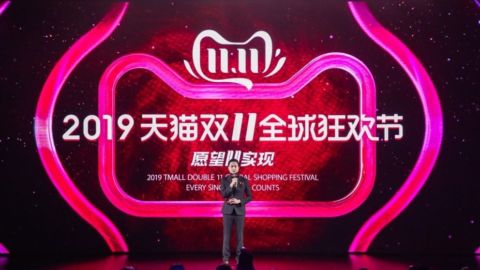The Amazon–Whole Foods deal made a splash that put every U.S. grocer on notice. In response, other grocery powerhouses — including Walmart, Kroger and Albertsons —have made bold moves that blur many of the lines separating “traditional” supermarket shopping from its online version.
Industry experts say that retailers in this vertical, which accounts for $608 billionin sales annually, according to IBISWorld, will need to make strategic shifts as these channels continue to converge. Four of the most important steps will be:
- Competing online via “basket sales” instead of individual purchases;
- Adopting omnichannel fulfillment services, whether through same-day delivery, buy online/pick up in-store and/or curbside pickup;
- Aligning organizational structure across brick-and-mortar and online employees; and
- Following the industry leaders when deploying new services while including a personal touch.
As Online Shopping Grows, Grocers Must Discover How To Sell Frequently And Consistently
By 2024, 70% of U.S. consumers will be grocery shopping online, according to estimates from the Food Marketing Institute (FMI) and Nielsen. This will amount to an estimated $100 billion spend, which is equivalent to every U.S. household spending $850 online for food and beverage annually.
To compete for each shopper’s online share, food retailers will have to entice shoppers to purchase in baskets — meaning a week’s worth of groceries bought all at once. The first traditional brick-and-mortar grocers that learn how to sell a basket of groceries easily will change the dynamic of how consumers shop for food, according to Diana Sheehan, VP of Retail and Shopper Insights at Kantar Consulting.
“The retailers still have to learn how to connect the dots,” said Sheehan in an interview with Retail TouchPoints. “So many of them are still stuck in platforms online that focus on selling by the item. They have to get better at selling baskets, which they know how to do exceptionally well in-store. But the technology and the user experience expertise hasn’t gotten there yet. You see Ahold’s Peapod has lived this for 30 years and knows how to sell baskets online. That’s what shoppers are waiting for.”
Given that many grocers (including Amazon) still haven’t figured this out, grocery delivery players such as Peapod, FreshDirect and Instacart will still play important roles in connecting shoppers with retailers.
Instacart, for one, hasn’t backed down in the wake of the Amazon-Whole Foods merger. It has acquired digital grocery solutions provider Unata, expanded partnerships with Costco, CVS and SuperValu and entered new partnerships with Kroger, Albertsons, Aldi, Loblaw and most recently Sam’s Club. Additionally, the online delivery service recently announced that it raised $200 million in funding, positioning itself as a top player in the online grocery arms race.
BOPIS, Curbside Pickup Become Necessities As Channels Converge
Grocers are continuing to evolve with shopper preferences, particularly through omnichannel fulfillment offerings. Retailers in all sectors jumped on this bandwagon in recent years, and grocery is starting to catch up, with methods including buy online for home delivery, buy online/pick up in-store and curbside pickup.
In December 2017, Kroger rolled out the ClickList click-and-collect service to its 1,000th store, while Target made a big splash in acquiring grocery delivery service Shipt for $550 million. Target’s plans are quite ambitious — the big box retailer plans to offer the same-day service to approximately half its 1,834 stores by April 2018.
But Sheehan notes that deciding whether to offer same-day delivery, BOPIS or curbside pickup will still largely depend on factors such as the location of the retail store and the density of the population surrounding it. These variables will make it tougher for retailers to scale up their services profitably.
“We believe that we’re going to end up similarly to where Europe ended up,” Sheehan said. “We saw click-and-collect becoming the clear leading fulfillment approach in rural and suburban areas, because that’s where people are already driving. It’s not a big deal to just stop somewhere and have people load your car. We see home delivery as the path for the urban areas. National players are going to have to offer both. It’s not going to be one model over another; it’s going to have to be a hybrid.”
Organizational Alignment Is Required As Channels Converge
As traditional and online grocery channels continue to converge, food retailers must approach the training of employees the same way the rest of retail does. Supermarkets will have to catch up quickly. Even though online grocery continues to grow, only 7% of food retailers surveyed believe they have the skill sets to succeed in digital, compared to 22% of CPG manufacturers, according to FMI.
In the report, titled: The Digital Engaged Food Shopper, FMI said aligning organizational structure is the top imperative for grocers seeking to lead a successful digital transformation.
The rush to maximize their online channels drove many manufacturers and retailers to build separate digital teams, which often lack cohesion with traditional brick-and-mortar teams. Integrating into a singular structure can reduce redundancy and ensure a more cohesive strategy. Securing the right talent to lead integration efforts also is critical.
“It’s about people,” Phil Lempert, a grocery industry analyst who runs TheSupermarketGurusite, in an interview with Retail TouchPoints. “If you look at surveys, the retailers that always come out on top are Wegmans, Publix, Costco, and it’s because they’ve trained their staff properly. They take care of their staff, and don’t think of them as workers that are going to be there for six months. Amazon has opened the grocery industry to a whole new talent pool of people who never would have even considered working for a grocer earlier.”
If You Operate In The Mid-Market, Follow The Leaders
The growth of omnichannel grocery isn’t just for the biggest national players. Many small and mid-size supermarkets are busy bolstering their omnichannel capabilities.
Kowalski’s Markets, a grocer with only 11 locations in the Minneapolis-St. Paul region, launched an app from GrocerKey enabling shoppers to use in-store mobile self-checkout. This new feature lets shoppers scan and pay from their personal devices in-store while also expanding on the company’s online offering, which includes curbside pickup and home delivery. This move mirrors some of the recent developments from Walmartand Kroger, which are both expanding cashierless checkout tests to 100 and 400 stores respectively, as well as the newly opened Amazon Go.
“Copy what the leaders are doing, like Walmart,” said David Livingston, Managing Partner at DJL Research, a grocery market research provider in an interview with Retail TouchPoints. “It’s not that complicated. Don’t overthink the problem. Let the big companies do the heavy lifting and then copy their methods, and perhaps add your own personal touch.”
As many as 64% percent of shoppers at independent grocery stores are very or extremely satisfied with their local supermarket, according to the National Grocers Association in its 2018 National Grocery Shoppers Survey. And 67% have no plans to switch from their independent store, giving many of these grocers an edge when it comes to testing innovative ways to improve the consumer experience.
“I don’t think there’s too many barriers to this fulfillment right now,” Lempert said. “They understand that if they’re going to be in the game, that these are things that they have to do. There’s not a feeling of ‘I wish I could do that.’ They have to be in delivery, they have to be in click-and-collect. There might be a barrier for chains that are cash strapped, but for chains that are operating well, I don’t see any barriers.”
Whether grocers aim to ramp up their fulfillment initiatives, train their employees to operate under digital skill sets or partner with e-Commerce delivery providers, retailers must make these decisions sooner than later, regardless of size.
“The retail world is changing drastically and these grocers can’t waste any time, they have to do it now,” Lempert said. “They’re going to make some mistakes along the way, and that’s to be expected. But the reality is, if they just sit around and don’t do anything, they’re going to be out of business.”













3 Ways Livestreaming is Shaking Up the Retail Marketing Playbook